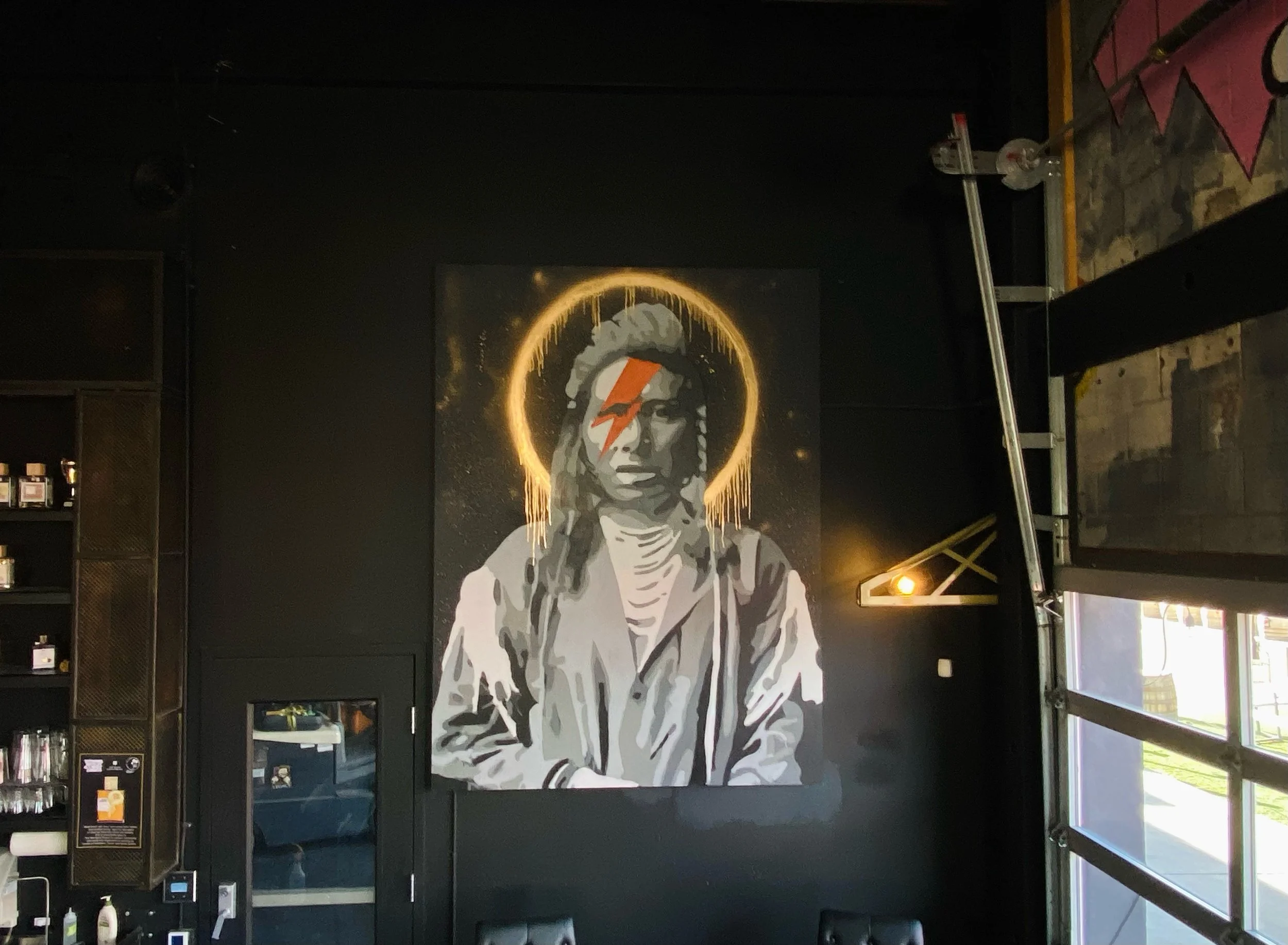The ZiggIndigenous
This piece has become an iconic work for local artist Gregg Deal. The overall reaction to it is based on the familiarity of the mix of two pieces of popular culture: the “relic” Native American Image of a Western Shoshone man named “Shoshone Pete” and David Bowie’s lightning bolt from his legendary 1973 album cover “Aladdin Sane”. Mixing these two images was a deliberate choice by Deal that began to show up in his work in 2010. Many versions took place over time until this illustrated version made a permanent home in Deal’s body of work in 2018.
The main purpose of this piece is a comment about the representation of Indigenous people in popular culture. The modern understanding of modern Indigenous existence is understated if not outright misunderstood. To take an image that would be recognizable in the realm of Americana, and the Western perception of Indigenous existence, and mix it with the iconic face bolt from David Bowie is meant to challenge these ideas, and place Shoshone Pete into a more modern context.
Additionally, the halo is a nod to Renaissance paintings where halos were often used to denote divinity. It was often understood through the eyes of Judeo-Christian colonialists that Indigenous people of the western hemisphere were less than, savages, godless heathens who were not divine to be eliminated in the name of white European progress. There are people in Indigenous communities, if not all Indigenous people are divine by right, both personally and culturally. The placement of this halo is to denote the divinity of Indigenous people.
To this nation’s First Peoples, the timelines of old and new are blurred, as there is a constant acknowledgment of both existing in the same space. The importance of recognizing modern Indigenous existence, the fact that you are on Indigenous homelands, and the need to recognize the many issues that plague Indigenous people as a result of that erasure can not be overlooked.
Representation matters, and is only enriched by the complexity of the existence of Indigenous people.
About Gregg Deal
Gregg Deal is a Colorado artist working along the front range in a number of mediums including murals, visual arts, performance art, music, filmmaking, spoken word, and installation works. Deal currently has three major murals in Denver, including one on the side of the Denver Central Market titled “I’m So Bored With The USA (The Clash)” as part of an ongoing series of repurposing comic book images of Native peoples “winning” while speaking lyrics from various Punk bands of the 70’s, 80’s and 90’s. He resides in El Paso County near Colorado Springs with his wife of 22 years and 5 children.


